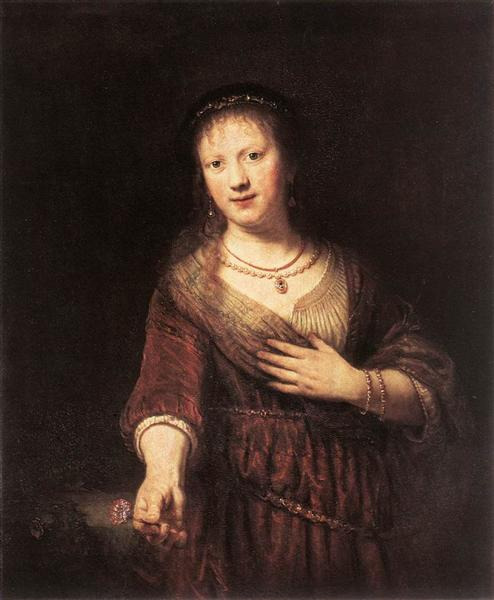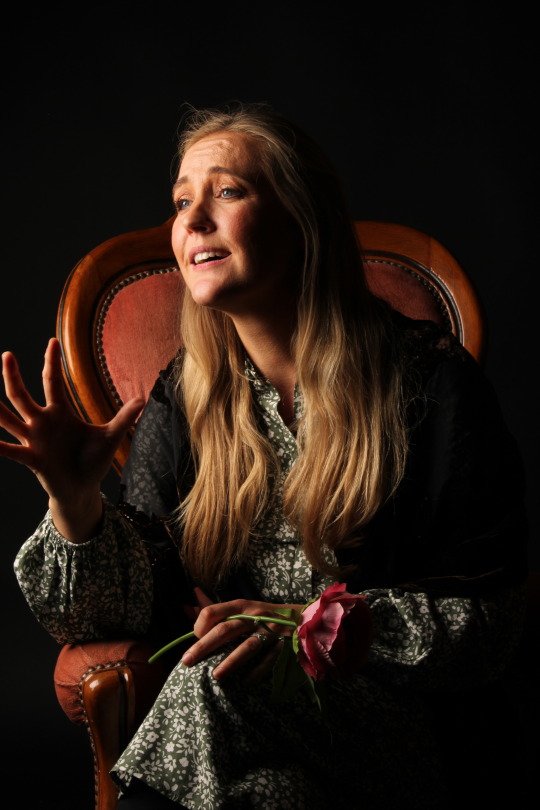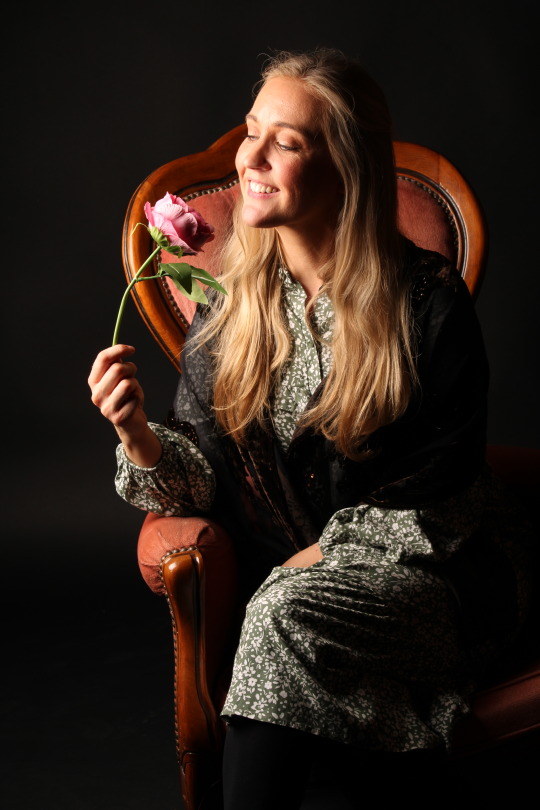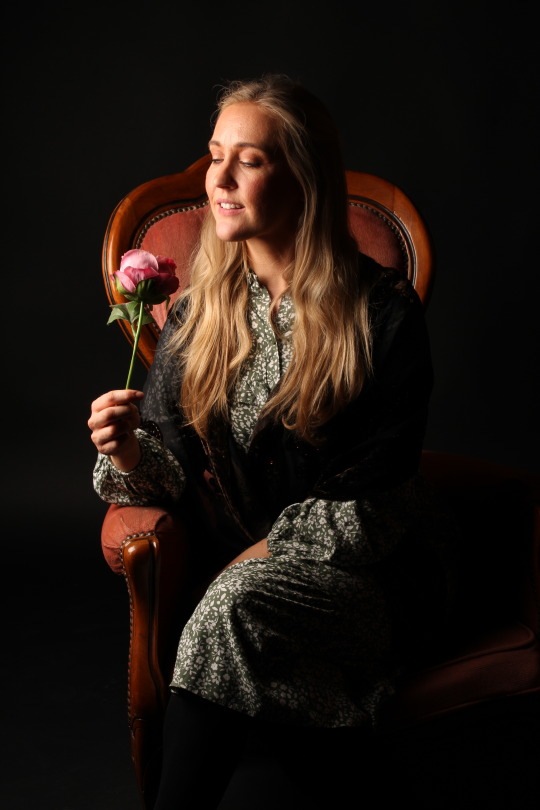#Titus van Rijn
Explore tagged Tumblr posts
Text

Rembrandt’s son, Titus van Rijn, in a monk’s habit.
#Titus van Rijn#rembrandt#paintings#portrait painting#dutch art#dutch painters#1600s art#17th century art
2 notes
·
View notes
Text
Historias trágicas detrás de las pinturas más famosas del arte
Ver una pintura en alguna pared o en otro lugar hace que nos pongamos a ver los detalles de esta, fijándonos en los detalles que el artista quiso poner para expresar algo. Pero muchas veces sólo nos quedamos con la pintura, sin saber el trasfondo de esta.
Observar una pintura colgada en una pared o en cualquier otro lugar nos invita a detenernos y explorar cada uno de sus detalles. Intentamos descifrar los trazos, los colores y las formas que el artista eligió para transmitir un mensaje o una emoción. Sin embargo, muchas veces nos quedamos solo con lo que vemos en la superficie, sin preguntarnos qué historia hay detrás de esa obra o qué llevó al…

View On WordPress
#asilo Saint-Paul#columna rota#Edvard Munch#el grito#El regreso del hijo pródigo#Frida Kahlo#historia de artistas#historia de pinturas#Historias#historias tragicas#la noche estrellada#pinturas famosas#Rembrandt Harmenszoon van Rijn#Titus van Rijn#van Rijn#Vassily Kandinsky#Vincent Van Gogh
0 notes
Text

تيتوس، ولد عام ١٦٤١، كانَ الابن الرابع للفنان رامبرانت وزوجتهُ الأولى ساسكيا، والوحيد الذي وصلَ لسن البلوغ. بعد عام ١٦٥٩، قامَ هو وعشيقة والده هندريكجي ستوفيلز، بإدارة أعمال رامبرانت، حيثُ فقدَ الفنان ثروتهُ بسبب أُسلوب الحياة المُترف وضعف الإستثمار، والتي لا تزال تفاصيلها غير واضحة في الأرشيف. وكانت قد صرحت المحكمة في وقتٍ سابق بأنَ الفنان ممنوع من التصرُف في أملاكهِ. ومن ناحية أُخرى توفى تيتوس في عام ١٦٦٨، أي قبلَ عاماً من ��فاة والدهُ.
كثيراً ما إستخدم رامبرانت ابنه كنموذج. في هذهِ اللوحة، جلسَ تيتوس على أريكة مُنهمكاً في كتابٍ يحملهُ بينَ يديهِ. ويُشيرُ فمهُ المفتوح بعضَ الشئ إلى التركيز العميق، مُضيفاً تأثيراً آنياً للمشهد. يبدو مُرتاحاً، وكُل تركيزهُ مُنصباً على الكتاب، بعيداً عن المُشاهد. يتركز الضوء على جبهتهِ، يديهِ، والكتاب، مما يُعزز حميمية اللحظة.
مُلاحظة: أحبَ الفنانون تصوير أفراد عائلاتهِم، وخاصةً الأطفال.
Titus van Rijn, the Artist's Son, Reading
Rembrandt van Rijn
1656/1657
1 note
·
View note
Photo

Rembrandt's son "Titus" or "Portrait of a Boy in Fancy Dress" c.1655
2 notes
·
View notes
Text
I came across this painting on tiktok earlier and tracked it down and I can't stop staring. I don't know why it's so captivating, I'm usually not even this into art. I just want to keep staring at it. There's two versions of the painting I could find, one with really vibrant colours and the other tuned down but both are gorgeous.


The painting, "Pallas Athene" is by Rembrandt and one of his pupils from circa 1657. It's gorgeous and I want it in my house immediately. It belongs to the collection of Calouste Gulbenkian Museum in Lisbon. It's an oil painting, the colours are so gorgeous to me. Looking at the painting closer, it radiates with Rembrandt's love of ancient weapons.
The background of the painting is relatively interesting. There's theories that the pose and appearance of the goddess is based off of Rembrandt's son, Titus Van Rijn. If I look at her face closer, I can definitely see the androgyne. Catherine II of Russia, ever the woman of taste, bought it from Paris and later gave it to her lover before being transferred to a museum and then bought through an art dealer by the current owner.
There's debate on the theme, date and origin of the artwork. Although nowadays, it's pretty much agreed it's by Rembrandt and one of his students. I think that might by part of why I like it. The mix of student and master levels of art into one. It's so. Gods. I can't describe it. There's two main theories I could find after my surface level search. One is that it was made to celebrate Saint Luke. The other that it was part of a trio of paintings, however looking at them (Juno and Venus), I don't think that's the case. The style is too different. I won't offer an art analysis since I'm not good at those things but there are some facisnating ones. They all definitely agree on the androgyne of the figure, which is further proven by another debated aspect of the painting: the name. Not everybody agrees that it is Athena in the painting, some think it is Alexander The Great or Titus himself. Alternative names for the painting include "Portrait of Alexander in the Armor of Pallas", "Mars", "Portrait of Titus" and "Young Warrior".
I might rant about this painting more but gods, I think it's one of my new favourites.
Sources:
9 notes
·
View notes
Text

Rembrandt Harmenszoon van Rijn
Titus van Rijn con hábito de monje, 1660 oil on canvas, 67.5 x 79.5 cm Barroco
Esta pintura representa al hijo de Rembrandt, Tito, con el hábito de monje franciscano.
📍Rijksmuseum, Amsterdam, Netherlands
4 notes
·
View notes
Text

MWW Artwork of the Day (9/7/23) Rembrandt van Rijn (Dutch, 1606–1669) Saskia van Uylenburgh in Arcadian Costume (1635) Oil on canvas, 124 x 98 cm. National Gallery, London
Saskia van Uylenburgh (1612-1642), the daughter of a burgomaster of Leeuwarden in Friesland, married Rembrandt in 1634 and brought him a large dowry. They had met in the studio of her cousin Hendrick Uylenburgh, who was Rembrandt's employer after his arrival in Amsterdam. Of their four children, only Titus was alive at the time of her death in 1642.Rembrandt painted this portrait in the year after their wedding. In showing Saskia as Flora, the Roman goddess of Spring, he reflected the contemporary fashion for Arcadian and rustic themes, which could be found in poems and plays as well as in painting.
14 notes
·
View notes
Text

Rembrandt van Rijn: Titus, fillo do artista, vestido con hábito franciscano (1660)
6 notes
·
View notes
Text










Diploma main diploma 2/3 "dutch baroque masters reproduction"
10/2021-02/2022 Rembrandt van Rijn -Titus
oil paint on canvas 100x70
Had trouble with hes face as you see and some were meemable lol and yes like prev one the face isnt finished (i am kindna a "perfectionist") Because i was frustrated a lot but i didnt have time with this and in the end it didnt matter anyway since i wont own it 🤡 you can clearly see the difference between everything and hes face, hes face is thou moddeled in the end ,finaly well but it wasnt finalised , shapes and values were acheived but not fully sculpted with colour etc also i dont know why in this diploma i did the faces last i srsly dont know
Also sorry its 2023 and posted i have issues and "no reason to live so imagine post since i wont get comissions or noone wants to see my art " Heck if 1 person dms me /comments that they would like to see my art it would be enough for me to post just for them
#my art#artists on tumblr#old art#drawing#baroque#oil painting#traditional painting#portrait painting#art reproduction#reproduction#rembrandt#rembrant van rijn#dutch baroque#art diploma
2 notes
·
View notes
Text
#FineArtFriday: History Painting, Titus (with self portrait) by Rembrandt Harmenszoon van Rijn 1626 (revisited)
History Painting, Titus (with self portrait of Rembrandt) by Rembrandt Harmenszoon van Rijn 1626 Artist: Rembrandt (1606–1669) Rembrandt Harmenszoon van Rijn Title: Historical Scene. Inscriptions: Monogram and date bottom right: RH 16[2]6 Object type: painting Genre: history painting Depicted people: Titus Date: 1626 Medium: oil on oak panel Dimensions: Height: 89.8 cm (35.3 in); Width: 121 cm…

View On WordPress
#16th-century Netherlandish paintings#Fine Art Friday#History Paintings#Paintings by Rembrandt#Rembrandt#Rembrandt History Painting Titus
3 notes
·
View notes
Text
Wat gebeurde er op 4 oktober?
1669 – REMBRANDT VAN RIJN (63) OVERLEDEN Hij was een Nederlands kunstschilder, etser en tekenaar. Hij geldt algemeen als een van de grootste schilders en etsers uit de Europese kunst en als de belangrijkste Hollandse meester van de 17e eeuw. Rembrandt vervaardigde in totaal ongeveer driehonderd schilderijen, driehonderd etsen en tweeduizend tekeningen, met als bekendste werk De Nachtwacht (1642). Behalve zijn vrouw Saskia van Uylenburgh, en zijn zoon Titus van Rijn zijn ook zijn huishoudsters, vriendinnen Geertje Dircx en Hendrickje Stoffels nadrukkelijk in zijn schilderijen aanwezig; zij hebben gefungeerd als model voor bijbelse, mythologische of historische figuren... Klik op de link hieronder voor meer Nieuws van Vroeger: http://johnooms.nl/2023/10/04/4-okt/

0 notes
Text










👨🎨🎨𝗥𝗲𝗺𝗯𝗿𝗮𝗻𝗱𝘁 𝘃𝗮𝗻 𝗥𝗶𝗷𝗻
Harmenszoon
(1606- 1669) Países Bajos
Fue uno de los artistas más destacados del siglo XVII en los Países Bajos.
Su aportación a la pintura coincide con lo que los historiadores han dado en llamar la edad de oro neerlandesa.
Es conocido por su habilidad en el manejo de la luz y la sombra, y por su capacidad para crear retratos realistas y llenos de vida. Sus obras también reflejan su fascinación por la Biblia y la mitología, así como por la vida cotidiana.
Rembrandt Harmenszoon van Rijn, uno de los más importantes artistas del Siglo de Oro holandés, nació en Leiden, Holanda, el 15 de julio de 1606. Era el noveno hijo de un molinero y, aunque se matriculó en la universidad local, decidió dedicarse a la pintura a una edad temprana.
En 1624, Rembrandt se mudó a Amsterdam y se convirtió en aprendiz del pintor holandés Pieter Lastman, quien lo introdujo en la técnica del claroscuro y la composición dramática. Después de dos años, Regresó a Leiden y abrió su propio taller, donde comenzó a ganar fama por su habilidad para retratar la vida cotidiana de manera realista y emocional.
En 1631, Rembrandt se trasladó a Amsterdam, donde se estableció como uno de los artistas más importantes de la ciudad. Se especializó en retratos y pinturas de escenas bíblicas, y su técnica de luz y sombra (chiaroscuro) se hizo cada vez más distintiva. Alcanzó gran éxito financiero y su trabajo fue muy solicitado por la élite de la ciudad.
A pesar de su éxito financiero, la vida personal de Rembrandt tuvo altibajos. En 1634, se casó con Saskia van Uylenburgh, quien provenía de una familia acaudalada y le proporcionó cierta estabilidad económica. Tuvieron varios hijos, pero la mayoría murieron en la infancia, y Saskia murió en 1642.
Después de la muerte de Saskia, la vida de Rembrandt fue aún más difícil. Se enamoró de Geertje Dircx, quien había sido niñera de su hijo Titus, pero ella lo demandó por incumplimiento de promesas matrimoniales. En 1654, Geertje fue declarada mentalmente inestable y encerrada en un asilo de por vida.
En 1656, Rembrandt tuvo problemas financieros y se declaró en bancarrota. La mayoría de sus posesiones fueron vendidas en una subasta, incluyendo su casa y su colección de arte. A pesar de estos problemas, continuó pintando y enseñando en su estudio, y su trabajo continuó siendo muy influyente en la pintura holandesa del siglo XVII.
Rembrandt murió en Amsterdam el 4 de octubre de 1669 a la edad de 63 años. Su estilo artístico influyó en muchos otros artistas, incluyendo a los maestros holandeses del siglo XVII, como Johannes Vermeer y Frans Hals, así como a los artistas del siglo XIX, como Vincent van Gogh.
Entre las obras más famosas de Rembrandt se encuentran “La lección de anatomía del Dr. Nicolaes Tulp”, “La ronda de noche”, “El regreso del hijo pródigo” y “La novia judía”. Sus retratos, como “Mujer con collar de perlas” y “Hombre con gorro negro”, también son muy conocidos.
El tema principal de la obra de Rembrandt es el estudio de la luz y la sombra, que él dominó magistralmente. También es famoso por su habilidad para capturar la emoción en los personajes.
Logros de Rembrandt
A continuación se presentan los principales logros de Rembrandt, uno de los artistas más influyentes e innovadores del Siglo de Oro holandés.
Pintó algunos de los retratos más icónicos de la historia del arte.
Fue uno de los primeros artistas en utilizar la técnica del claroscuro.
Desarrolló un estilo único de grabado en cobre.
Su obra “La Ronda Nocturna” es una de las más famosas de la historia del arte.
Su técnica de pintura al óleo es reconocida por su uso de la impasto.
Fue uno de los principales exponentes de la Edad de Oro de la pintura holandesa.
Sus obras han sido objeto de estudio y admiración por artistas de todo el mundo durante siglos.
#Porsimelees❤
0 notes
Text
Hereges – Leonardo Padura

Outro autor que dispensa apresentações... Todos os livros dele são excepcionalmente bons! Hereges conta várias histórias, entrelaçadas por um pequeno quadro de Rembrandt retratando um jovem judeu como um Cristo humanizado. Tais histórias cobrem desde Rembrandt e seu quadro, o modelo que foi usado e que queria ser pintor, os que levaram esse quadro na sua viagem ao fugir do nazismo e tentar entrar em Cuba, seu misterioso reaparecimento numa casa de leilões e o personagem Mario Conde, tão presente nos livros de Padura, que vai investigar tanto o sumiço como seu reaparecimento, a pedido de um dos descendentes dos legítimos proprietários desse quadro.
“Na manhã de 14 de junho de 1642... Rembrandt seguia o andamento fúnebre da modesta carroça em que viajavam os restos daquela que havia sido sua esposa e musa mais solicitada,...
,,, Rembrandt van Rijn chorou com toda a sua tristeza....o pintor jurou que nunca mais choraria. Por motivo algum....
... Então, Rembrandt van Rijn, tão esgotado, não teve força para cumprir o juramento que fizera a si próprio. Antes de morrer, ele teria de chorar mais quatro vezes.
Porque Rembrandt chorou na tarde de 1656 quando, vencido pelas pressões dos credores, teve de declarar falência e abandonar a sua querida casa no número 4 da Jodenbreestraat, enquanto os membros do Tribunal de Insolvências Patrimoniais faziam o inventário de todos os seus pertences, obras, lembranças, objetos, acumulados durante anos, para serem liquidados em leilão público em benefício de seus credores.
Voltaria a chorar na noite de 1661, quando os altos dignatários da prefeitura de Amsterdã, sem pagar um centavo pelo trabalho solicitado, recursaram, por considera-la imprópria, rude e até mesmo inacabada, sua peça A Conspiração de Claudius Civilis...
O homem voltaria a chorar em 24 de julho de 1663, quando deixou em um túmulo da Westerkerk o cadáver de Hendrickje Stoffels, a mulher que o acompanhara durante quase vinte anos...
E, quando já não lhe restavam forças sequer para amaldiçoar a Deus, teria de chorar outra vez em 7 de setembro de 1667, quando, contra natura, viu morrer seu filho Titus, quinze dias antes de completar 27 anos de idade. Tanto chorou essa morte que apenas um ano depois ele também morreria, lamentando o macabro atraso do Criador.”
“Lá fora começou a cair uma chuva cortada por relâmpagos. Eles, a salvo de qualquer inclemência externa, beberam em silêncio, como se não tivessem nada para dizer, mas, na verdade, não precisavam falar porque já haviam dito tudo. Os anos e as pancadas da vida lhes ensinaram a aproveitar plenamente os instantes em que o prazer era possível para depois, avaros, jogarem essa efêmera sensação de vida desfrutada no mealheiro dos ganhos indeléveis, um recipiente translúcido como a memória e que sempre podia se quebrar caso viessem tempos piores, quando haveria até mais razões para chorar. E eles também sabiam que essa era uma possibilidade permanentemente à espreita. Mas estavam ali, tenazes, bebendo, trancados por vontade própria entre as muralhas erguidas para proteger o melhor de sua vida, seus únicos pertences inalienáveis.”
Se quiser ouvir o próprio autor falando sobre o livro veja
youtube
1 note
·
View note
Text

هذه صورة قد تكون لإبن رامبرانت تيتوس (الذي كان عمره حوالي ١٤ عاماً). منهاراً فوق أوراقه، يحدق الصبي في المدى متأملاً. يحمل قلماً في يد ومحبرة وحافظة أقلام في اليد الأخرى. تتمثل السمات الرائعة لهذه اللوحة في الإضاءة والتكوين المثلثي وتحركات الفرشاة الصريحة والتي تنحو قليلاً إلى التعبيرية في مقدمة اللوحة.
كان تيتوس فان راين (١٦٤١–١٦٦٨) هو الوحيد من بين أبناء رامبرانت الأربعة من زوجته الأولى ساسكيا والذي بقي على قيد الحياة في مرحلة الطفولة. إشتهر كشخصية أو نموذج في لوحات ودراسات والده وأيضاً بسبب قضية قانونية بإعتباره الوريث التفضيلي.
Titus at His Desk
Rembrandt van Rijn
1665
0 notes
Text
My portraiture photography inspired by Rembrandt
My photographs I would like to create in studio, were inspired by these 2 paintings.
Saskia with flower

Saskia with a Flower is a 1641 oil on canvas portrait by Rembrandt of his wife Saskia van Uylenburgh, now in the Gemäldegalerie Alte Meister in Dresden. It is also known as Saskia with a Red Flower, Saskia with a Carnation or Saskia as Flora.

Hendrickje Stoffels (1626 – 21 July 1663) was the long time partner of Rembrandt. The couple were unable to marry because of the financial settlement linked to the will of Rembrandt's deceased wife Saskia, but they remained together until Hendrickje's death. In 1654 she gave birth to Rembrandt's daughter Cornelia. In the later years of their relationship Hendrickje managed Rembrandt's business affairs together with the painter's son Titus.
Hendrickje is widely believed to have modelled for several of Rembrandt's works and to be depicted in some Tronie portraits. However, her role as Rembrandt's model is disputed by some critics.
Relationship with Rembrandt
Hendrickje obtained work as Rembrandt's housekeeper, and seems to have lived with him from approximately 1647, at first as a maid, but fast becoming much more. This led to an acrimonious fallout with Rembrandt's previous live-in lover Geertje Dircx, who sued Rembrandt for breach of promise in 1649, and demanded maintenance payments from him. Hendrickje testified in the case, confirming that a financial agreement had been reached with Geertje. In the same year Hendrickje returned to Bredevoort for the summer (possibly with Rembrandt accompanying her), and is there mentioned as a witness to a christening in the Bredevoorts church records. The Eighty Years' War was past, and peace was finally reaching even the eastern Netherlands.
In 1654, when she was pregnant with Rembrandt's daughter, Hendrickje had to appear before the Council of the Reformed Church for "living in sin" with Rembrandt, who was a widower and 20 years her senior. She admitted to "unwedded cohabitation" with Rembrandt and was banned from receiving communion. On 30 October 1654, the couple's daughter Cornelia van Rijn was baptized in the Oude Kerk in Amsterdam. Rembrandt and Hendrickje lived together as common law husband and wife until her death in 1663.
Initially, Rembrandt's unwillingness to marry Hendrickje had a pecuniary motive: by marrying her he would have forfeited the inheritance of his first wife Saskia van Uylenburgh. Even with this inheritance he had major financial problems, but without it he would have been bankrupt. But then in 1655, Titus – the son he had with Saskia – turned 14, and thereby eligible by law to make his will. Rembrandt immediately made sure that Titus installed him as his only heir and by that he outwitted Saskia. Still, he did not marry Hendrickje.
As Rembrandt's dealer
By 1656 Rembrandt was forced to declare bankruptcy. In 1658 he lost his house, and he, Hendrickje, Cornelia and Titus moved into rented property in the Jordaan. In the same year, Hendrickje, who got along well with Titus, opened an art shop with Titus’ help where she sold Rembrandt’s paintings. In order to protect him from his money lenders Hendrickje and Titus became his employers.[9] In this way his former maid Hendrickje Stoffels had become his boss – at least officially. Her biographer Christoph Driessen believes that Rembrandt’s noticeable productivity in the early 1660s was caused by the obvious support Hendrickje was rendering him. She was organizing his life for him and prevented his complete downfall after his bankruptcy.
In May 1663, the plague arrived in Amsterdam and killed thousands, especially at the end of the year. It is not clear Hendrickje was a victim of the epidemic as she was the only one who was buried in the Westerkerk in Amsterdam on 24 July 1663.
In Rembrandt's art
Hendrickje may have been a model for
Bathsheba at Her Bath (1654).
Though there are no paintings that are explicitly identified as depictions of Hendrickje, there are a number of portraits, nudes and other images which appear to depict the same woman, who is often assumed to be Hendrickje. A portrait in the National Gallery, London is identified as her "based on the knowledge of the sitter's relationship with the artist, and the informality and affection with which she is represented. She is seated wearing a fur wrap and jewellery. There are a number of other portrait-like images that appear to depict the same woman. However, Rembrandt scholar Eric Sluijter is sceptical of attempts to identify Hendrickje in Rembrandt's work, writing that,
If one compares the large number of etchings, drawings and paintings with the purpose of recognizing Hendrickje it appears more often than not that there is little mutual resemblance between all the candidates. It is surprising how, still, in recent art historical literature numerous works are identified as Hendrickje Stoffels as a matter of course.
Sluijter suggests that the broad similarity between the faces of women in Rembrandt's paintings suggest that he tended to portray an "ideal type".
Hendrickje is also traditionally identified as the model for a number of nudes, especially the painting Bathsheba at Her Bath. She would have been 28 at the time of the painting. Sluijter has proposed otherwise, stating that Rembrandt would be very unlikely to portray his partner's own recognisable face on nudes to be sold publicly.








0 notes
Text

Titus at his Desk Rembrandt, 1655
11 notes
·
View notes